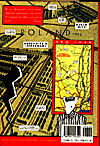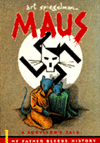
--Saul Friedländer, "Trauma, Transference and Working-Through," History and Memory 4 (1992): 39-55.
Copyright © 1995 by Robert S. Leventhal, all rights reserved. This text may be shared in accordance with the fair use-provisions of the U.S. Copyright Law. Redistribution and republication of this text on other terms, in any medium, requires the written permission of the author.

|
"Whether commentary [...] is built into a structure of a history or
developed as a separate, superimposed text is a matter of choice, but the
voice of the commentator must be clearly heard. The commentary should disrupt
the facile linear progression of the narration, introduce alternative interpretations, question any partial conclusion, withstand the need for closure [...]Such
commentary may introduce splintered or constantly recurring refractions of a traumatic past by using any number of different
vantage points." --Saul Friedländer, "Trauma, Transference and Working-Through," History and Memory 4 (1992): 39-55.
|
I. Trauma, Working-Through, and the Problem of Historical Understanding
One of the most significant attempts to understand the response to the Shoah is through the texts and terms of Freudian Psychoanalysis. In his decisive essay of 1916, Mourning and Melancholia, referred to many times in this archive, Freud distinguishes between two fundamentally distinct modalities of moving through the trauamatic loss of a beloved object. In mourning, the subject grieves for the loss of the beloved, and gradually comes to terms with that loss through the sustained reflection regarding the multiple meanings of that loss. Mourning is characterized by an initial withdrawal from the external world of things and events, and centers upon the subject's feeling of the loss of a significant aspect of one's life. In melancholia, however, there has usually been a highly ambivalent relation to the beloved object, and the subject becomes isolated, depressed, and experiences this loss of the Other as the loss of him or herself. The melancholic reaction to the traumatic loss of a beloved is characterized by extreme self-devaluation, to the extent that the subject might actually believe that he or she is responsible for the death or departure of the Other, that he or she is a "murderer" him or herself responsible for the "killing off" of the Other. Or, conversely, the subject views him or herself as the abandoned object, having been "left" by the departed Other, and might view him or herself as a victim, as the wounded or hurt recipient of this traumatic loss that the Other has "imposed." In both cases, there is what Freud referred to metaphorically as a "damming-up" (Eindämmung) of the libido and life-energy, and consequently, an interruption or an obstruction of the mourning process. On a self-consuming and clogged circuit, the individual's guilt and self-victimization become stumbling blocks for the gradual process of mourning, which for Freud is characterized by, first and foremost, a realistic recognition of the loss, and, secondly, a "coming to terms with" the very real effects of that loss.
Is the psychoanalytic theory of Melancholia adequate to the reverberations of the trauma suffered by survivors and the children of survivors? Because melancholia itself is only characterized as an individual phenomenon, as something that is both experienced and processed by an individual, it is questionable whether such a model is at all appropriate to both the description and the process of working-through collective trauma on the scale of the Nazi Genocide of the Jews of Europe 1941-45. In their study, The Inability to Mourn (1967; English translation 1975), Alexander and Magarethe Mitscherlich attempted just such an extrapolation from the Freudian and Neo-Freudian theories to a theory of collective melancholia, or a collective inability to mourn. According to their work, the German people have never been able to truly mourn either their own suffering as a people, the collapse of the Nazi illusion and the destruction of their nation, nor the murder of the Jews in the Second World War. German guilt blocked the paths of possible recognition and thus contributed to precisely the vicious repressive cycle of defense (Abwehr) and depression. In addition, external, material political and economic conditions did not helpt to create an environment or "public sphere" in which such a realistic and honest recognition of the past could occur; post-war reconstruction, the focus on rebuilding and becoming a vital part of NATO and a close partner to the U.S., and the anti-communist fervor of the 50s all displaced the task of mourning and a collective reckoning with the past and the guilt of what had been perpetrated. In a word, Germany was too busy becoming a part of the new-world order, and the U.S. was more than interested in burying its own ties to the Nazis and thereby assisting in this systematic forgetfulness.
In the Neo-Freudian Theories of Winicott, the attempt has been made to articulate the process of "working-through" the traumatic loss of the beloved object more precisely. Winicott's famous phrase "Mourning without empathy leads to madness" has often been cited as the key to his theory, which is that there must be an empathetic witness to the pain of this traumatic loss, that the person who suffers this loss must be able to give testimony to someone as a way of working-through or processing this loss, and that finally certain "transitional" or "intermediate" objects might be necessary in order to move from the state of dependence and reliance on the Other to a renewed state of self-sufficiency after the traumatic severance.
The difficulty with this type of understanding is its insistence on a singular empathetic Other who hears the testimony of the witness, and thereby bears witness to the traumatic loss in a therapeutic manner. What does it actually mean to "work-through" a traumatic loss? and what does this mean with regard not to an individual, but to an entire people? Many of the normative claims of psychoanalysis are present in this type of approach: the hope is that a gradual reintergration of the meaning of the lost object occurs and the fact of the loss helps the subject to grow beyond this dependency in the construction of a self that is able to tolerate and understand alterity and is not rigidly defined. This was the point of Eric Santner's discussion in his book Stranded Objects.
II. The Postmodern Melancholia
In much of what has been written about the Holocaust in recent years, one can notice a tendency to discuss the Holocaust and the responses to it in terms borrowed from the description of Melancholia. One of the most obvious instances of this can be seen in Lyotard's connection of Auschwitz and the unrepresentable in The Differend. Here, the sublime, which since Kant has been the singular individual's struggle of the Idea in the face of overwelming experiences, is utilized to characterize the sense of the Shoah: the individual is to "bear witness" to the unpresentable and inexpressable loss, for no language, no vocabulary can even approach the horror of Auschwitz. Auschwitz becomes a limit that defies phrasing. Such a view is prevalent in much of the present work on trauma, for example in Cathy Caruth's "Unclaimed Experience: Trauma and the Possibility of History" Yale French Studies 79 (1991) and in her material in the edited issue of American Imago 48 nos. 1 & 4 (1991). Trauma here is not merely seen in the Benjaminian sense of the disruptive and disrupting condition of history and historicity; History itself is henceforth understood as traumatic, and itself comes to be precisely such a lost or dead object as in the theory of melancholia. As Dominick LaCapra has pointed out in his book Representing the Holocaust (Ithaca: Cornell, 1994), this conflation of history with trauma might itself be the uncritical result and symptom of posttraumatic, unworked through identifications and investments. An example of what LaCapra is hinting at might also be the work of George Steiner, in which Auschwitz signifies an irrevocable loss of language, and the German language in particular. For LaCapra, one of the great challenges of postmodern and poststructuralist readings of the trauma inflicted by the Shoah would be to reflect on the ways in which they themselves participate in a melancholic reaction to the event.
III. Cultural Besetzung: The Canon and Canonical Texts
One of the ways in which a culture betrays (in the sense of "allows to become clear") its own "investments" or "occupations"Besetzungen, to use Freud's term for the psychic endowment of certain things, is in its priveleging specific ways of thinking and writing, certain forms of presentation, the selection of specific genres as being "apt" or "appropriate" for certain tasks. An analysis of Steven Spielberg's Schindler's List could show that the primacy of the (visual) romance in some way governs the institution of filming in that film. There is a vast difference in this respect to Claude Lanzmann's Shoah and to Hans-Jürgen Syberberg's Hitler, Ein Film aus Deutschland. As Primo Levi sought to articulate the discursive and logistical space of Auschwitz, Syberberg attempts to actually enter into the distorted puppet-show of German Fascism, the "black studio" of German (film) projections and fantasies, the nostalgiac, melancholic state of Postwar, Postholocaust Germany. Lanzmann's Shoah equally does away with conventional narrative schemes and totalizing representation, presenting the Nazi Genocide in a series of detailed "researches" or "inquiries," and utilizing not a single foot of documentary film from the thirties or forties. Lanzmann's film allows the contradictions between the testimony of the perpetrators and that of the victims to stand. It neither escapes into false or coerced reconcilations, nor does Shoah accept the validity of unreflected testimony unquestioningly.
The way in which a culture organizes, "disciplines," and reads a certain event is an excellent way to find out about that culture's "troubled areas" or "hot spots." The philosopher Berel Lang has argued in his book Act and Idea of the Nazi Genocide that there are only certain appropriate and ethically responsible ways of representing the Shoah. In this respect, many crtics have said that the Holocaust requires an "elevated" genre, that it is the stuff of "high" literature and should not be "desecrated" by allowing low genres to communicate the destruction of the European Jews. There would at first sight seem to be an inalterable cultural hierarchy of forms, media, genres: the novel, the tragedy, a poem, a scholarly essay or book might be considered acceptable; on the other hand, a satire, a parody, a comedy, a farce -- these would not seem to be eligible for "appropriate" forms of literary representation for the Holocaust. But the fact is that both within these genres and modes, as well as with regard to the genre or mode itself, there are both "high" and "low" forms; and what is radical, chic, or revolutionary at one historical juncture might be quite reactionary or conservative at another. There is nothing inherently subversive or conservative about a genre. It is all a matter of how it is used, in what context it is used, and the intention it is meant to embody. My view is that Art Spiegelman, precisely by utilizing the "comic-book" as the textual and imagistic medium for a story of the Holocaust, succeeds in breaking the "taboo" or "ritualized fixity" of confronting the Holocaust. It also subverts the assignment of the "comic" to a genre of kitsch and "popular culture" in a twofold way: first, insofar as it supercedes and explodes the traditional genre in terms of the scope of its presentation; secondly, insofar as it presents a historical catastrophe in a medium usually reserved for hero-construction and morality play.
In this way, Spiegelman's Maus is a double critical inversion of the traditional genre and form of the comic book.
IV. Spiegelman's Maus: The Intentional Subversion of Genre and Cultural Norm
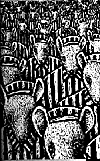
Art Spiegelman first published parts of MAUS in the magazine Raw between 1980-1991. Volumes I and II of the book Maus: A Survivor's Tale appeared in 1986 ("My Father Bleeds History") and 1991 ("And Here my Troubles began"). Maus is the use of a traditionally "low" genre -- the comic strip or book --for serious, grave material. It is a conscious, intentional inversion of a norm, a hierarchy, a cultural order. It is a very "strong" (in the Bloomian sense) rereading of one survivor's tale and the transmission or testimony of this tale to the son; it is at the same time a strong revamping or reconsideration of the generic possibilites of the "comic" itself.
The reduction of the players to cats (the Nazis). mice (the Jews), pigs (the Poles) and other national stereotypes offers a conscious, intentional miniaturization and reduction, pointing up not only the process of compression, simplification, and devaluation present in much of Holocaust memorialization, but the reduction and dimunition of the individual that was an essential component of the Nazi extermination machine. In this way, Spiegelman literalizes the call for petits recits or "small narratives" -- as a opposed to the grand metanarratives which are seen as oppressive and indeed as forms of terror -- so prevalent in postmodern discourse today, especially in the writings of Jean-Francois Lyotard.
On another level, there are multiple narratives and kinds of texts in Maus: in addition to images, dialogue boxes, and commentary, we find maps of Poland and the Camps, diagrams of hideouts, real photographs from the family archive, detailed plans of the crematoria, an exchange table for goods in Auschwitz, and a manual for shoe-repair. Consider, for instance, some of the various text-image-types that one finds in Maus:
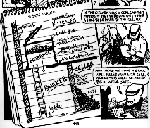
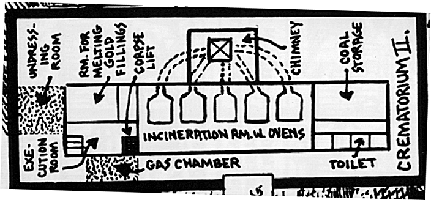
The reader moves through several different "historical subject-positions" and narrated events; there
are the pre-holocaust, the Holocaust, and the postholocaust "moments" or "segments," but also, within
one time-frame, there can be other times and places co-present as well.
Maus thus juxtaposes and intertwines past and present, the different
subject histories of each protagonist, and the very different cultural
contexts of Nazi occupied Poland and Rego Park, New York. The very title of
the books is itself a powerful reworking of the convention: Maus rewrites the
cultural norm and invents a new discursive space to address the questions
of Jewish trauma, guilt, shame and, perhaps most importantly, the transmission
of these conflicts from one generation to the next, especially in the case
where they are not sufficently worked-through.
Maus encompasses many small narratives: not merely the story of Vladek (Artie's Father) and Anje (Artie's Mother, who committed suicide after surviving Auschwitz and coming to America), but of Artie himself in his struggle to understand his family origins and himself. It addresses the constant resurfacing of a traumatic and "unmastered" past on a number of levels: the death of his brother, Richieu, of a poison given to him by the woman who was taking care of him as they were about to be sent to Auschwitz to be gassed, the suicide of his mother in 1968, and the murder of the European Jews. This is perhaps nowhere more evident than at the end of Volume I "My Father Bleeds History," where Artie asks Vladek for Antje's diaries. Vladek first tells Artie that the Diaries are gone, and then finally remembers that he himself had destroyed them -- burned them to be exact -- in the depths of depression. Vladek not only burned the diaries -- in a ironic enactment of Nazi Book-Burning -- but he sadistically adds salt to the wound when he tells Artie: "I looked in, but I don't remember [...] Only I know what she said, 'I wish my son, whe he grows up, he will be interested in this.'" Artie, who himself suffered a depression after his mother's suicide, calls Vladek a "murderer," unable himself to understand Vladek's action as itself an act of acting out the legacy of the Holocaust. In this transmission circuit, Artie is tied to his father, and we see this played out in Maus in his complete dependence on Vladek for the narrative of his own story.
The "broken" relationship between Artie, Vladek, and this unmastered past is exemplified in the broken relationship Artie has to his own Jewish heritage. In Maus I, Vladek is in a German work-camp and has a dream in which his dead Grandfather comes to him and tells him that he will leave this place and go home to his wife and child on Parshas Truma. Artie then asks his father what Parshas Truma is, unaware of the symbolic and literal meaning of this in his life and in Jewish tradition. His father then explains to him the meaning of Parshas Truma, the specific week in which a particular section of the Torah is read. It turns out that this was the week he had married Anja, and the week Artie had his Bar-Mitzvah. In this time frame, Vladek actually does get to leave the camp and see his wife and child. The broken circuit is thus restored in the text precisely because of Artie's interest in the narrative and the construction of the text Maus itself. But the evidence of a failure in the transmission of culture and tradition, the traces of this broken connection to the past and to history is present to the extent that Artie must now relearn this complex history.
Maus is allegorical, not merely to the extent that it treats the individuals as figures in a much more complex and global story, but insofar as its very textual structure is comparable to the allegorical structure of the emblem, with a graphic image elucidating the text, as well as a superscript expressing the "topic" or "theme," the actual statements of the individuals in the frame, and often a subscript containing unconscious thoughts or afterthoughts. In Maus, the image is never left to stand alone, but is always caught up in the differential between narrative, image, dialogue and reflection. In this manner, an opening or aperture for critical thinking on the transmission of past trauma is created.
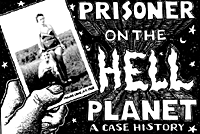
In a particularly compelling segment of the text, Artie narrates his reaction to his mother's suicide. A comic book within the comic book Maus entitled "Prisoner on the Hell Planet: A Case History," this text-within-the-text recounts Artie's own incomplete or failed attempt to work through the trauamatic loss of his mother, his own melancholic and masochistic tendencies to internalize the dysfunction of his family and his mother's depression, and the degree to which his writing bears the mark of that loss and is itself a type of working-through in its own right. The subtitle "A Case History" mocks the case history in psychoanalysis, in which the patient is "cured" of the incessant return of the traumatic past through rigorous therapeutic intervention. In "Prisoner from the Hell Planet," there isn't any easy closure, and the suffering individual remains captive in the prison of his own masochistic melancholia, the jail cell of his own wounded self, not really understanding the unconscious connection to the melancholia of the mother and the unconscious identification with the damaged father.
Traversing the breach between past and present, Father and Son, language and image, manifest and latent, Spiegelman's Maus bears witness to the process of bearing witness, and the technical and technological requirement of writing and tape-recording in order to produce a narrative of the trauma and thereby alleviate the symptomology of depression and withdrawal that is the danger of a past left to fester as an unhealed wound. Paul Celan's essay Meridien states that every piece of authentic writing has a date and a place: it speaks a specificity, and in that specificity it gestures towards an Other. Spiegelman's Maus, in transmitting the story of the father through the son, does not avoid or gloss over any of the difficulties, the interferences, jamming, distortions or parapraxes entailed in working-through trauma, which usually brings with it some degree of "acting-out". Maus enacts the difficulty of this specificity, working through a traumatic historical past that defies attempts at mastery; Maus is a personal, authentic presentation of the the traumatized self struggling to come to terms with its own damaged and wounded history in a conscious manner.
Maus II ends with the reunification of Vladek and Anja after Auschwitz. In the final scene, Vladek tells Artie he is tired of talking: "I'm tired from talking, Richieu, and it is enough stories for now." This last slip of the tongue, the final parapraxis of the text -- naming Artie his other son, Artie's dead little brother Richieu, who perished in the Holocaust -- attests to the ongoing trauma that never ceases never ceasing to break in upon the conscious, wakeful world, and our inability to always control the myriad ways in which the symptom will make itself felt. Maus is a compelling, determined refusal to surrender to explanations, case histories, and grand narratives that would somehow assuage the trauma and provide any closure or final understanding.
